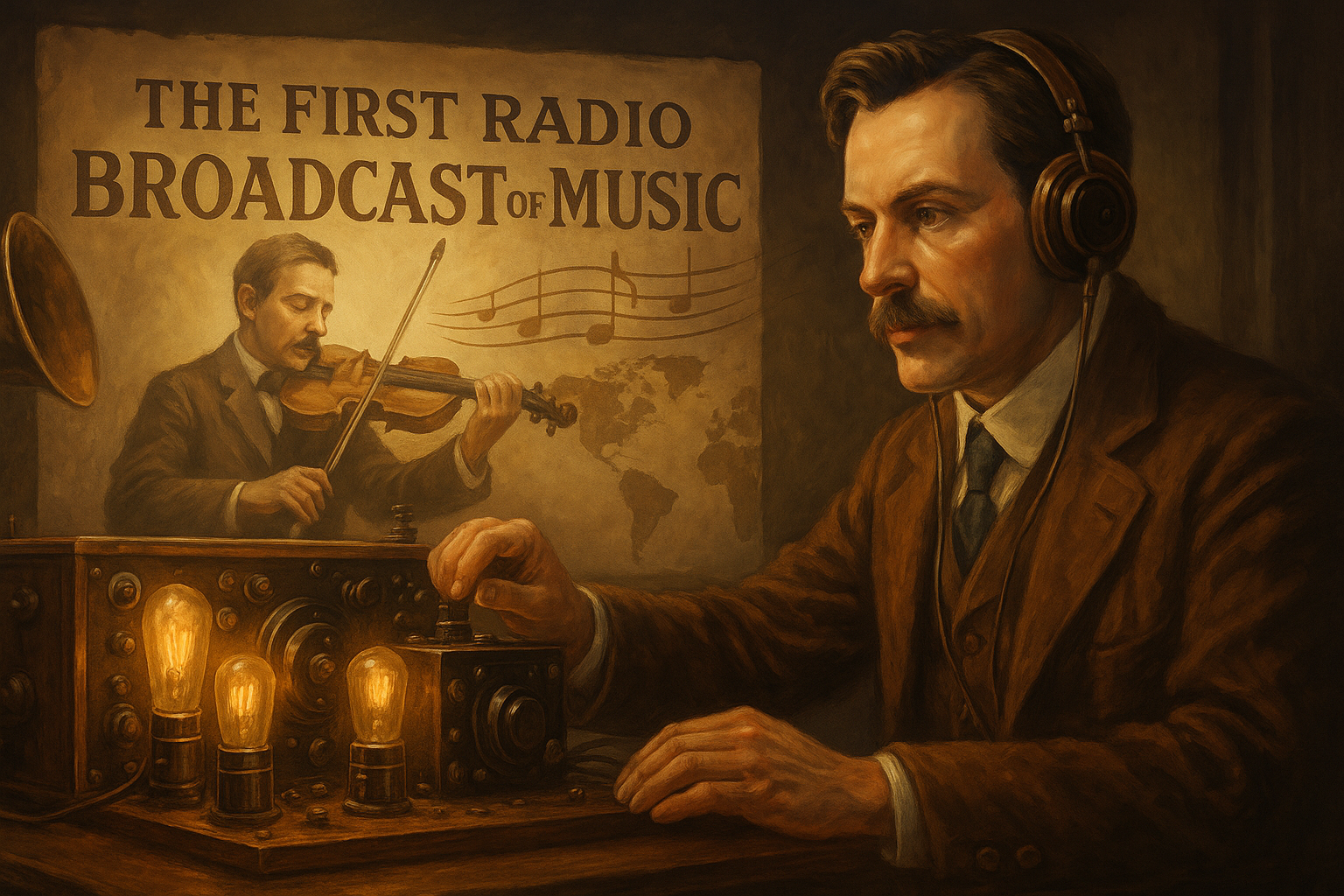How It All Started
At the beginning of the 20th century, radio was used only for sending Morse code signals. No songs, no voices – just dots and dashes. Sailors and the military relied on radio as a quick way to send messages over long distances. But in December 1906 something happened that forever changed the future of broadcasting.
Who Came Up With the Idea
American engineer Reginald Fessenden wanted to test if it was possible to transmit real sound through radio waves. On Christmas Eve he prepared a bold experiment. Instead of the usual Morse clicks, he connected a microphone, a violin, and a phonograph to his transmitter.
What the Sailors Heard
On December 24, 1906, sailors on ships near the coast of the USA and Canada turned on their receivers expecting Morse code. Instead, they heard a Christmas hymn played on a violin and the voice of Fessenden himself. For that era, it was a miracle – music and speech coming out of a radio receiver for the very first time.
Why It Mattered
From that moment, radio was no longer just a military tool. It became a medium of mass communication and entertainment. People realized they could listen to concerts, news, and programs live – without going to the theater or waiting for a newspaper.
How It Changed the World
- Broadcasting concerts and shows
- Delivering the news to millions of people
- Launching the very first advertisements
- Connecting towns and countries in one common space
A Fun Fact
Fessenden never became as famous as Marconi, often called the “father of radio.” But his Christmas experiment gave humanity something even more powerful – the joy of hearing real voices and music on the air.

